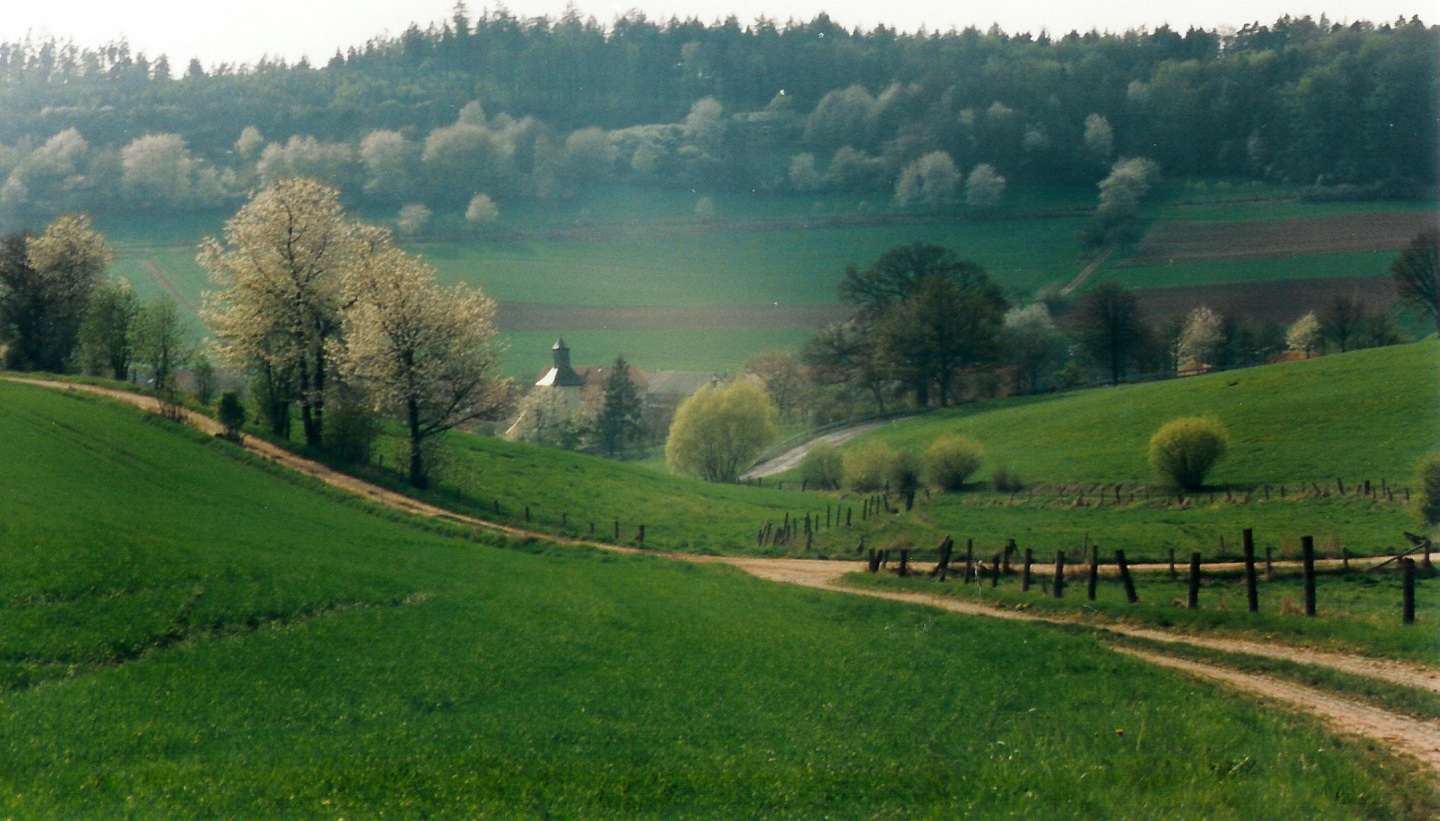

The ancient conflict between good and evil is illustrated in the fairy tale of Little Red Riding Hood, but the story also contains a ray of hope: every person who is not evil to the core has a chance that goodness will win in the end. Children sense this instinctively and remain unafraid when they hear the story, in spite of its brutal plot.
Red Riding Hood’s region stretches out across the North Hessian cultural areas of Schwalm and the Knüllgebirge with their sweeping landscapes of woods and meadows and their undulating ranges of low mountains. The custom of traditional dress is cultivated here
Sculptures of Little Red Riding Hood and the wolf can be found in Treysa. The girl is wearing the typical buckle shoes and bell-shaped knee-length skirts which are typical characteristics of Schwalm costume.
The Red Riding Hood fairy tale is a reminder of the region and the typical headdress traditionally worn in the Schwalm area. The girl’s marital status and degree of prosperity can be identified from her clothes. Women wore colourfully ornamented bonnets on their heads and these were red in the case of unmarried young women. In the fairy tale, a little girl is given a present of a “cap of red velvet” by her grandmother.
A new regional consciousness which can be felt everywhere in Little Red Riding Hood’s country has developed from these analogies over recent years – in the medieval half-timbered towns, in the painters’ colony in Willingshausen and in the fairytale houses in Neukirchen and Alsfeld. Today, “Red Riding Hood’s wolf” lives with his fellow wolves in Knüll wildlife park.